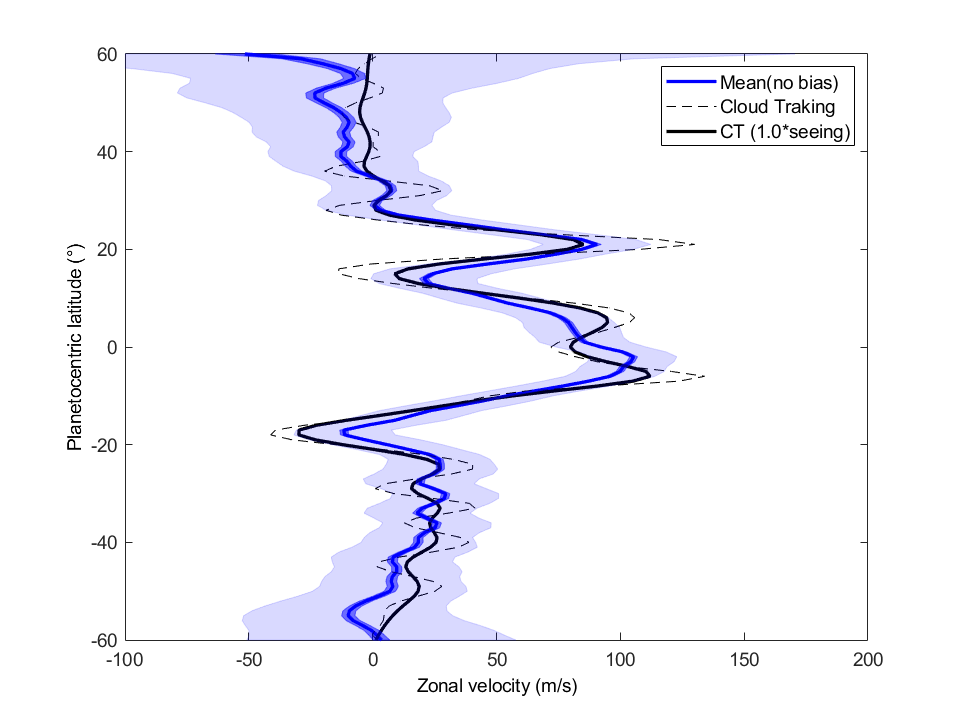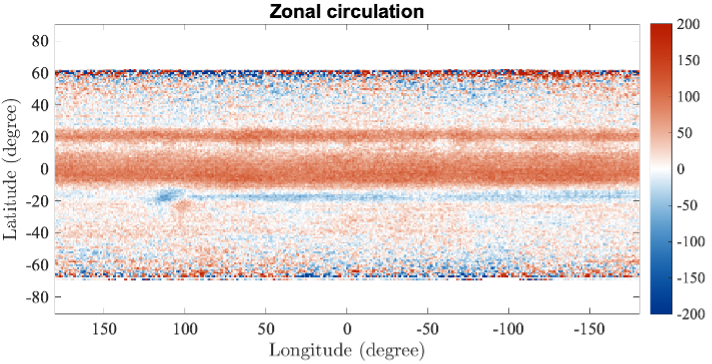JOVIAL data are available from the database at IAS
To access to the database, follow the link
First zonal wind profile obtained by Doppler imaging technique

In 2015, we obtained test measurements with the MeO telescope in Calern and then in 2016, we completed a first observations run with the C2PU telescope in Calern. These two runs permitted to solve a number of technical issues and allowed to develop the whole data processing procedure. As a first result, we produced a first zonal wind profile on Jupiter, which was compared with zonal wind obtained by cloud-tracking from HST observations.This result was the object of a publication in Icarus (Gonçalves et al, 2019).
In 2017, we installed the instrument at the Dunn Solar Telescope at the Sacramento Peak in New Mexico (USA). New observations were done during spring 2018. A new zonal wind profile was obtained. Thanks to the capability of the telescope to rotate the field of view at the entrance of the instrument, it was possible to calibrate the instrumental effect due to the orientatio of the field. We produced a new zonal profile, and even a full map of the zonal wind.
First dynamic map of Jupiter obtained with JOVIAL
Below is an image of the zonal winds on Jupiter displayed in a planisphere. Prograde winds are counted positive (white). This image was obtained by adding 16 nights of observations of Jupiter from Sunspot. Contour plot of photometric intensity are superposed in blue.

The rotating motion around the Great Red Spot is clearly visible here. The other components of the wind (meridional, vertical) could also be retrieved, but not independently. In the future, we would like to combine velocity data obtained with Adaptive Optics system, together with velocity deduced from cloud tracking, to recover the full dynamics. It will be helpfull to understand the coupling between the interior and the atmosphere.




